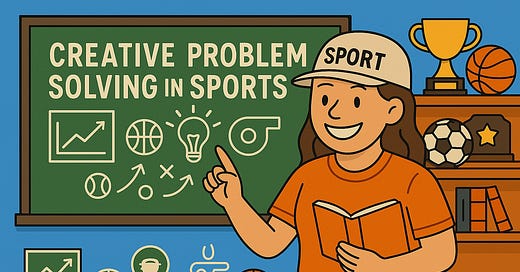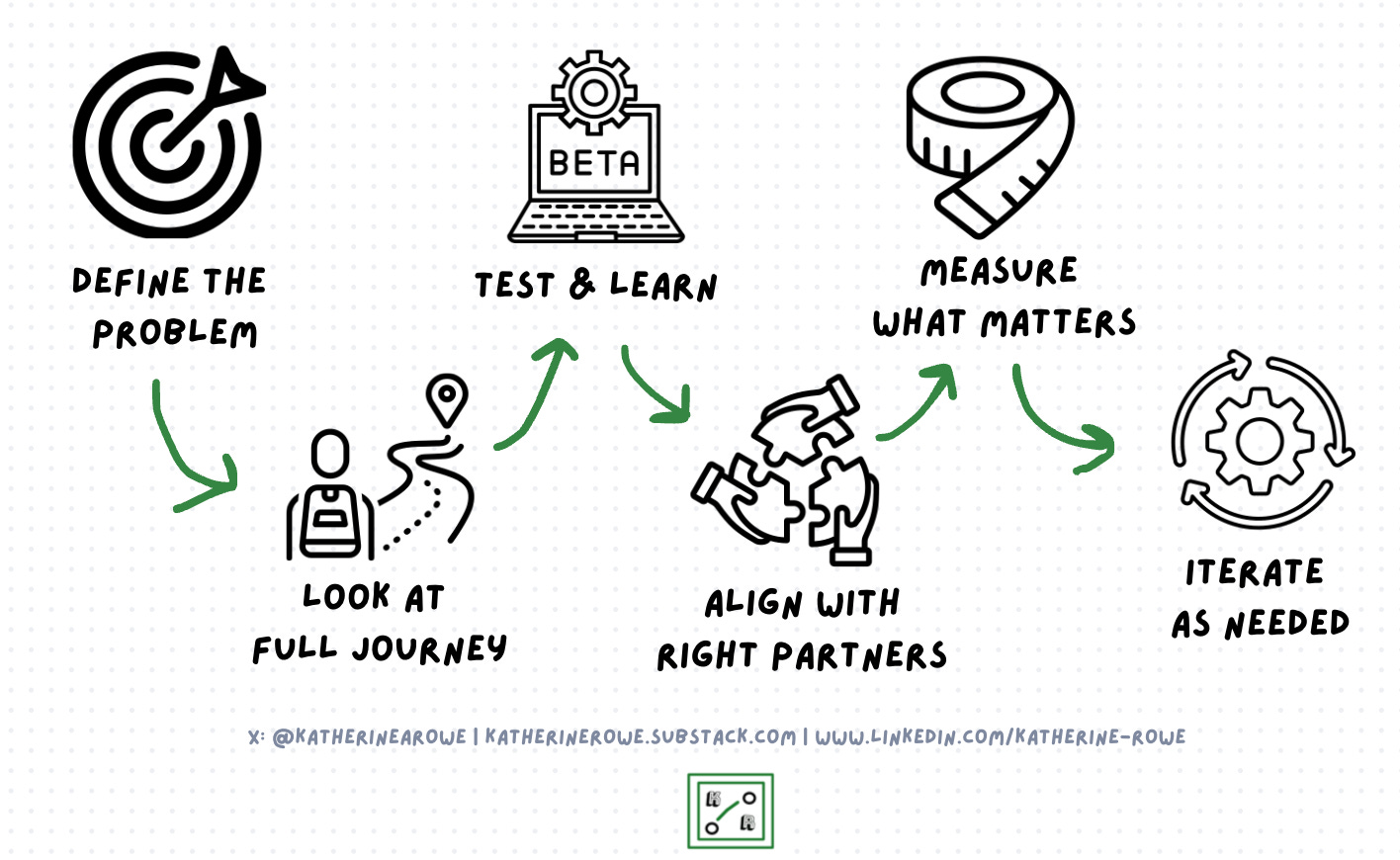Draft, Then Deliver: Building Smarter in Sports
How to approach sports problems with curiosity, creativity, and intention
I’ve been thinking a lot about creative problem solving over the last several weeks - from helping fans navigate a difficult streaming landscape, to providing them with a map to find their own path through fandom. Last week, we talked about creativity and design as the first step in reading partnership signals, so starting there!
When Fortuna Düsseldorf announced they would make select matches free in 2023, the decision drew headlines (and I even wrote about it, twice). While most coverage focused on ticket prices, the real story was strategic. The club made a deliberate choice to center access and rethink assumptions.
That approach reflects design thinking at its best. It is not just about aesthetics or innovation. It is about reshaping the starting point. It also applies well beyond the stadium.
In sports, many solutions focus on fixing what is visible: a new app, a different giveaway, or a cleaner loyalty program. Real transformation often begins earlier by asking better questions and designing around behavior rather than tradition.
This is a working framework I use to try to solve various problems that can hopefully bring some of my recent ideas to life.
1. Begin with the Right Problem
Common sports problems often surface in the form of lagging indicators. Low attendance, short engagement windows, or flat digital metrics are usually symptoms. These signals do not always point directly to what needs attention.
Reframing begins with asking more precise questions:
What are we expecting fans to do that may no longer feel natural?
Where are we losing people, not just in the funnel, but in the process?
Are we solving for the outcomes we want, or designing around real behavior?
These questions open up space to identify friction points that often go unnoticed. For example, a late-arriving crowd might not be a punctuality issue. It could signal that the pregame experience is not relevant or worth arriving early for.
2. Look at the Full Journey
The fan experience extends far beyond the walls of any venue. Fans make decisions across platforms and contexts, often days before or after the event itself.
Effective design should consider:
How fans hear about an event or piece of content
What actions they take between discovery and participation
When and where they consume highlights or follow-ups
How the experience fits into their daily rhythm
This broader lens ensures that solutions align with how fans actually move through the world, not just how organizations wish they would.
3. Build Small and Learn Fast
Creativity often gains traction through experimentation. Testing in controlled environments helps reduce risk while increasing learning.
A few low-barrier examples include:
Creating a single content format designed for casual fans on social media
Offering a pilot version of a new membership model with no long-term commitment
Testing an activation designed with direct fan input, then measuring sentiment and uptake
These prototypes do not need to be flawless. They need to generate feedback that can be used to adjust and improve future efforts.
4. Make Space for Purpose-Aligned Partners
Strong ideas should serve fans and the business. That includes giving sponsors meaningful ways to contribute, not just branded space.
Effective partnership design might involve:
Co-creating solutions around specific goals, like welcoming first-time attendees
Tracking impact through new data points that highlight inclusion or regional reach
Allowing the partner to share in the story, not just the outcome
When brands help facilitate real change, their value becomes part of the narrative. Fans tend to remember those contributions.
5. Measure What Moves, Not Just What Performs
Not every creative initiative will result in immediate growth. Some ideas exist to shift perception, reduce friction, or increase trust.
To evaluate those efforts properly:
Define what success looks like before launch
Identify specific behaviors or feedback to monitor
Choose metrics that reflect movement, not just output
Success may look like improved retention rather than spikes in attendance. It may look like first-time viewers who come back the next week. These shifts are valuable, even if they appear gradual.
Final Thought
Design thinking is not reserved for designers. It is a toolset for reimagining the way sports organizations connect with people.
That includes longtime fans and first-time participants. It includes digital viewers and tailgaters, students and families, skeptics and diehards.
A well-designed experience does not start with asking what has worked in the past. It starts with listening for what fans need now. The strongest solutions do not simply aim to capture attention. They aim to earn trust, shape rhythm, and offer clarity in a crowded landscape.
There is no single blueprint. The best strategy is often the one built around real people, not just legacy models. It’s ok to be different as long as there’s a plan for measurement, iterating, and continuing to create.
As always, thanks for reading.





